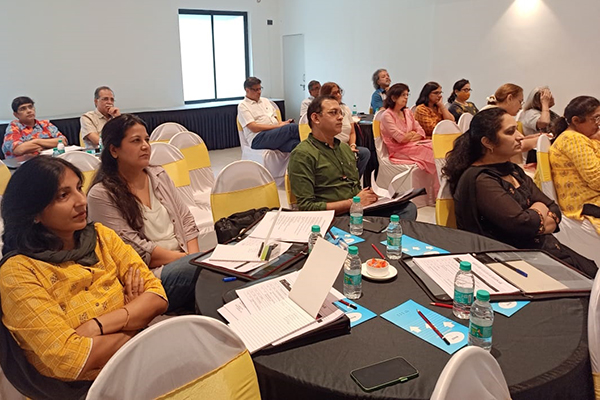
By Vivek Khandelwal, a former Group Study Exchange participant and member of the Rotary Club of Deonar, Mumbai, India
What makes one Rotary club vibrant and another one not? Sometimes, this is not always the easiest thing to understand. But I can vouch for the difference it makes during my own experience as a Rotary member for the past 12 years. And a lot of it stems from how effectively a club plans for and executes changeover in club leadership.
When I was president of my club in 2015-16, it was just my club’s third year. The members had mixed levels of experience and enthusiasm. Some of them had been Rotary members for some time but a lot of them were brand new to Rotary. Everyone brought their own level of professionalism and expectations to the club.
I attended every training program my district governor had organized, and the instructions were meticulous. However, I found them much harder to implement.
Every Rotary year ushers in change, from the top down. It is part of what has helped Rotary thrive from year to year as new ideas and new perspectives are brought forward, and new leadership brings new energy.
But while we often think that every Rotary member understands and appreciates the changes that take place every 1 July, this is not always the case. In hindsight, I believe younger clubs need a different level of nurturing than more established ones.
I had a great board of directors, but we were not as effective as we could have been. The goals and objectives of the Rotary year and the requirements of each officer were not driven home as effectively as they could have been during our directors orientation program. As a result, members did their part, but a heavy burden fell on my shoulders to keep the club moving forward and in synch with the objectives of that Rotary year.
Was my experience unique? I do not believe so. I have since come to believe it is an experience faced by many younger clubs not prepared for the expectations of a new year and what is needed to drive the club forward and keep it on track.
I believe younger clubs need a different level of nurturing than more established ones.
Recently, I attended a directors orientation program by my president-elect Vidhya Subramanian, and I realized just how effective a club can be if members are more united toward common goals and there are innovate ways to drive the club’s agenda.
The president-elect meticulously planned every detail and brought a variety of case studies to show common issues that can occur and ways to counter them. She had studies that addressed membership growth, engaging members especially dormant ones, getting past presidents to remain a part of club leadership, promoting giving to The Rotary Foundation, and getting everyone involved in service. She brought in some of the finest speakers including past district governors to share their inspiring stories. She enlisted the help of district and club trainers.
This level of commitment, and this passion, unites members and drives a club toward common goals. It leads to members who are fully engaged. It increases connections and friendships between members and leads to successful and lasting projects.
Rotary clubs, especially young clubs, will benefit if they can evolve from a “one size fits all” approach to leadership change. We need to give younger clubs more help and more support. And we need to embrace a custom mentality where club leadership teams find their own growth path and spend sufficient time explaining their goals and objectives to their members. If we can do that, great things will happen.
https://blog.rotary.org/2022/06/15/how-to-set-your-club-on-a-good-path-for-the-new-rotary-year/

